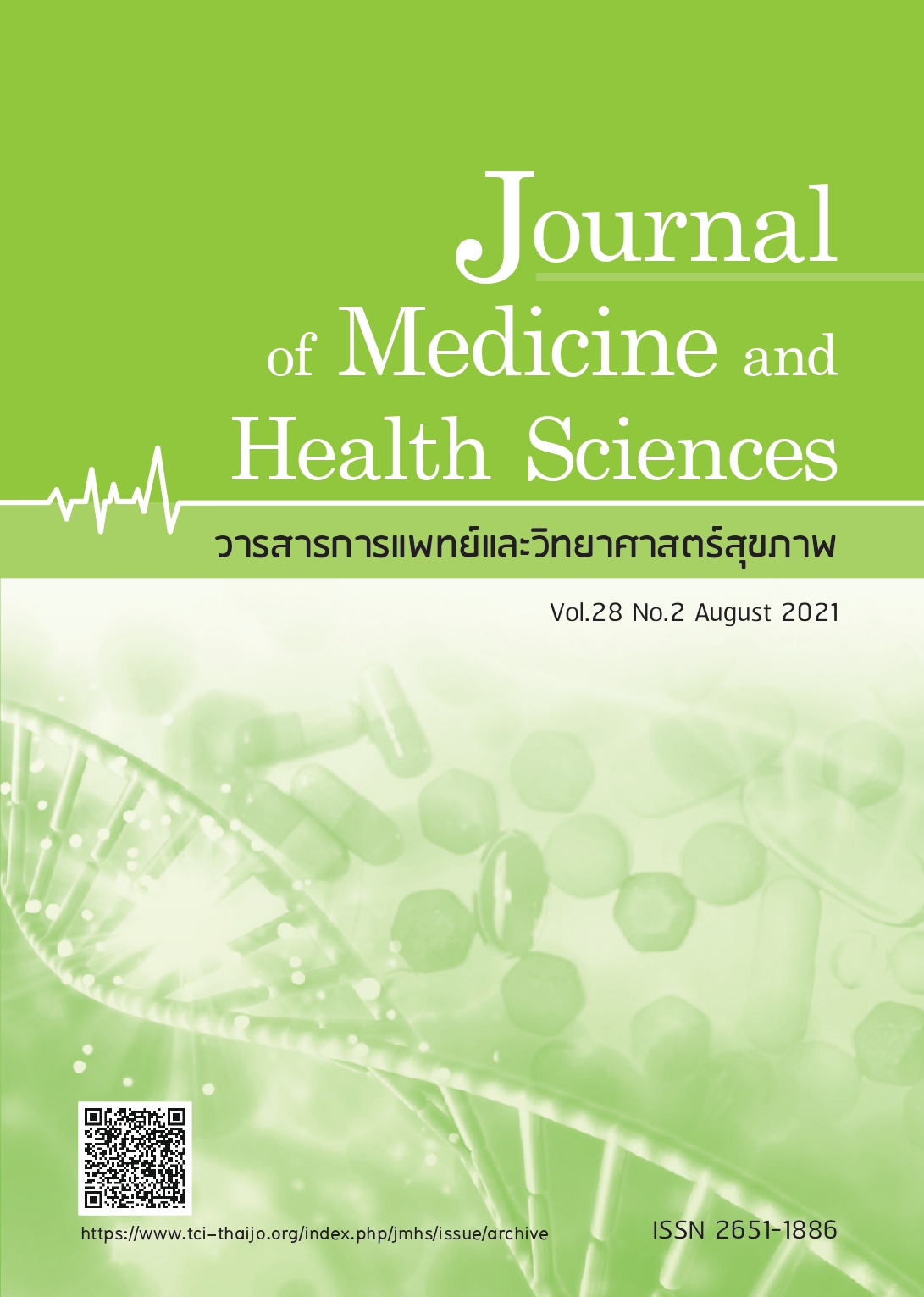Road traffic accidents, sleepiness, and Obstructive sleep apnea: A cross sectional study among public transport drivers in Chonburi province
Keywords:
public transport drivers, road accidents, sleepiness, Obstructive sleep apneaAbstract
For a decade, road accidents have been one of the top three causes of death in Thailand. Driving while drowsy is a factor that increases accident risks and Obstructive sleep apnea (OSA), which is often a cause of drowsiness. Public transport drivers have a higher risk of driving when drowsy and are at a higher risk of OSA than other members of the population. The aim of this study was to explore the causes of road accidents, the factors associated with road accidents and sleepiness, and to examine the prevalence of OSA among public transport drivers in the Chonburi province of Thailand. A cross-sectional analytical study was employed in this study, employing a face-to-face questionnaire, together with a physical examination, was used to collect data from 218 public transport drivers. It was found that 43.1% of the samples had been involved in road accidents. The highest percentage of accidents were caused by sleepiness or micro-sleep (20.3%). The factors associated with road accidents included caffeinated drink consumption (adjusted OR=2.7, 95%CI=1.3-5.8), the Epworth sleepiness score >10 (adjusted OR=2.0, 95% CI=1.1-3.8), and the Pittsburgh Sleep Quality Index >5 (adjusted OR=3.2, 95% CI=1.7-5.9). Furthermore, excessive daytime sleepiness was indicated by 33% of the samples. Poor sleep quality was revealed in 43.1% of the samples. The factors associated with excessive daytime sleepiness was body mass index >25 kg/m2 (adjusted OR=1.7, 95% CI=2.2-11.8), Pittsburgh Sleep Quality Index >5 (adjusted OR=3.6, 95%CI=1.18-4.75), and STOP BANG >3 (adjusted OR=2.3, 95%CI=1.30-4.12). The prevalence of OSA risk was 41.7%. Excessive daytime sleepiness and poor sleep quality were the leading factors for road accident risks among public transport drivers. Drowsiness or micro-sleep driving screening among people applying for commercial driver’s licenses is essential. Furthermore, campaigns promoting good sleep quality for public transport drivers should be regularly held.
References
2. World Health Organization. Road safety assessment Law and Institutional, Thailand 2016:6-12.
3. Pack A.I, Maislin G., Staley B, et al. Impaired performance in commercial drivers: role of sleep apnea and short sleep duration. Am J Respir Crit Care Med 2006;174:446-54.
4. Carlos Alberto de Assis Viegas, Haroldo Willuweit de Oliveira. Prevalence of risk factors for obstructive sleep apnea syndrome in interstate bus drivers. J Bras Pneumol 2006;32:144-9.
5. Vennelle M, Engleman H.M, Douglas N.J. Sleepiness and sleep-related accidents in commercial bus drivers. Sleep Breath 2010;14:39-42.
6. BaHammam A.S, Alkhunizan M.A, Lesloum R.H, et al. Prevalence of sleep-related accidents among drivers in Saudi Arabia. Ann Thorac Med 2014;9:236.
7. Tanathitikorn C. Prevalence and related factors of excessive daytime sleepiness among bus drivers in Bangkok. Master’s thesis Faculty of Medicine Chulalongkorn University, 2012.
8. Hamed, M. M., Jaradat, A. S., & Easa, S. M. (1998). Analysis of commercial mini-bus accidents. Accident Analysis & Prevention, 30(5), p.555-67.
9. Ebrahimi M. H, Sadeghi M, Dehghani M, et al. Sleep habits and road traffic accident risk for Iranian occupational drivers. Int J Occup Med Environ Health 2015;28:305-12.
10. Tanathitikorn C. Prevalence and related factors of excessive daytime sleepiness among bus drivers in Bangkok. Master’s thesis Faculty of Medicine Chulalongkorn University, 2012.
11. Leechawengwongs M, Leechawengwongs E, Sukying C, et al. Role of drowsy driving in traffic accidents: a questionnaire survey of Thai commercial bus/truck drivers. J Med Assoc Thai 2006;89:1845.
12. Bioulac S, Franchi J.A.M, Arnaud M, et al. Risk of motor vehicle accidents related to sleepiness at the wheel: a systematic review and meta-analysis. Sleep 2017;40.
13. Schiza S.E, Bouloukaki I. Screening for obstructive sleep apnoea in professional drivers. Breathe (Sheff) 2020;16.
14. Strohl K.P, Brown D.B, Collop N, et al. An official American Thoracic Society Clinical Practice Guideline: sleep apnea, sleepiness and driving risk in noncommercial drivers.
An update of a 1994 Statement. Am J Respir Crit Care Med 2013;187:1259-66.
15. Karimi M, Hedner J, Häbel H, et al. Sleep apnea-related risk of motor vehicle accidents is reduced by continuous positive airway pressure: Swedish Traffic
Accident Registry data. Sleep 2015;38:341-9.
16. Neruntarat C, Chantapant S. Prevalence of sleep apnea in HRH Princess Maha Chakri Srinthorn medical center, Thailand. Sleep Breath 201;15:641-8.
17. Chaiard J, Deeluea J, Suksatit B, et al. Factors associated with sleep quality of Thai intercity bus drivers. Ind Health 2019;57:596-603.
18. Braeckman L, Verpraet R, Van Risseghem M, et al. Prevalence and correlates of poor sleep quality and daytime sleepiness in Belgian truck drivers. Chronobiol Int 2011;28:126-34.
19. Berger M, Varvarigou V, Rielly A, et al. Employer-mandated sleep apnea screening and diagnosis in commercial drivers. J Occup Environ Med 2012;54:1017.



